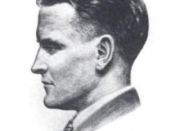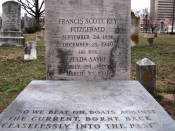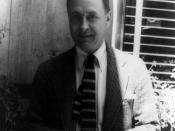In the novel "The Great Gatsby", Fitzgerald uses the eyes of Doctor T. J. Eckleburg, a pair of fading, bespectacled eyes painted on an old advertising billboard over the valley of ashes, to represent the omniscient God in the dying society Fitzgerald seeks to depict. The eyes are referred to several times sporadically throughout the novel.
In the very much abandoned Valley of Ashes, the billboard stands as a solitary landmark. Fitzgerald chose these huge, flat, empty eyes to symbolize a dead God staring blindly out at the moral decay of humanity and the meaningless garbage that societies lives had become. The fact that Fitzgerald chose to represent God by a lifeless pair of eyes shows his belief that we no longer have a belief in God, that our disbelief renders him lifeless. During the Twenties, the general public shifted from its prior rigid rules to more flashy, liberal ways of life.
Family values were often ignored, and religion suffered setbacks too. Fitzgerald addresses the issue of fading religion in the 1920s. In a subtle way, Fitzgerald places the presence of a higher being in the novel, and it watches the actions of the main characters.
This higher being, knows as Doctor T. J. Eckleburg, sees the transgressions of the doomed party but does not possess influence over the final decisions or fate of the group. The absence of religion in the lives of Daisy, Gatsby, Nick, Jordan, Tom, and others allow them to lead lives of idleness, greed, and atheist beliefs. Each evades the consequences of his/her actions and hides from moral values which religion demands, but the eyes are immune to social class or beauty and focus entirely on the harsh reality of ones actions.
These eyes, as seen by Nick are "blue and gigantic" and...


